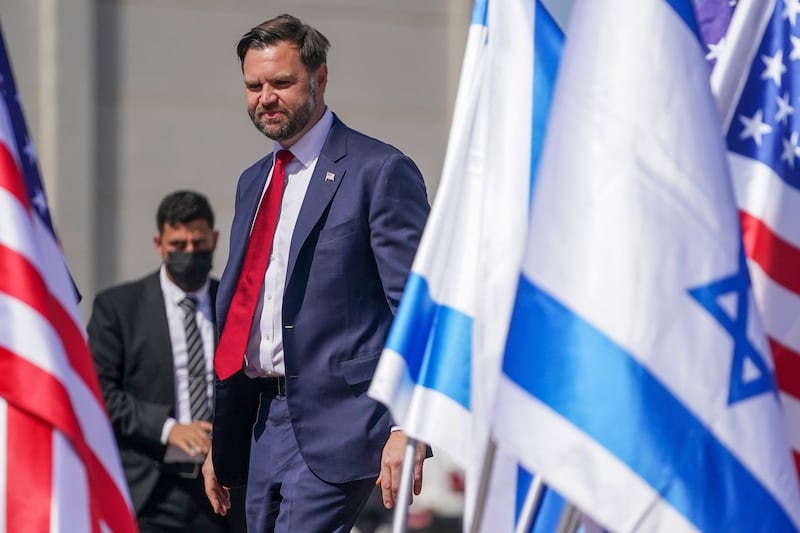Vice President JD Vance and second lady Usha Vance touched down in Israel on Tuesday to stabilize the fragile ceasefire brokered by President Donald Trump after several spouts of violence erupted in recent days.
Vance was greeted by the U.S. Ambassador to Israel Mike Huckabee, Israeli Ambassador to the U.S. Yechiel Leiter and Minister of Justice Yariv Levin. He had lunch with special envoy Steve Witkoff and Trump’s son-in-law Jared Kushner, who have been key players in negotiating the ceasefire between Israel and Hamas.
Vance is in the Middle East to ease tensions in recent days since the start of the ceasefire earlier this month. The vice president, however, insisted on Tuesday that things were going well in the region.
“We are doing very well. We are in a very good place. We’re going to have to keep working on it but I think we have the team to do exactly that,” he said from a press conference flanked by Kushner and Witkoff.

The ceasefire survived a rocky weekend after the Israel Defense Forces sent a “series of strikes” against Hamas in Gaza over what the IDF said was a “blatant violation” of the ceasefire agreement. Israeli forces said two of its soldiers were killed by Palestinian forces in an area agreed to be in Israeli occupation under the ceasefire’s first phase.
Israel declared a pause in humanitarian aid heading into Gaza but later reversed course and said the much-needed aid would begin on Monday and the critical Rafah crossing between Egypt and Gaza would be open.
Trump issued a threat to Hamas after as many as 27 members of the Dughmush family were killed in Gaza. He reupped the threat in a post online Tuesday, noting that U.S. allies will gladly go into Gaza and “end” the group.
Under the next steps in the ceasefire, Hamas would not have any role in governance in Gaza and would be demilitarized. It’s unclear when the group would disband, especially as it clashed with Palestinians in Gaza in recent days.
Vance admitted that he didn’t have the answer to what the new governing authority in Gaza would look like, but it would be “very flexible” to what is happening in the territory.
“We need to reconstitute Gaza. We need to reconstruct Gaza. We need to make sure that both the Palestinians living in Gaza, but also the Israelis, are able to live in some measure of security and civility,” he said.
He also argued that security, rebuilding and distribution of aid must first happen and if discussions centered around Gaza’s governance, “we should pat ourselves on the back” because it’s a “very good problem to have” given what needs to be done first.
The White House is apparently aware of how fragile the ceasefire is, particularly as Hamas is slow in its return of the deceased hostages and Israeli Prime Minister Benjamin Netanyahu originally would have liked to continue the war until Hamas is completely disarmed and disbanded.
Vance’s visit, just about a week after Trump was in the region to set the peace plan in motion, shows the administration’s intention to keep the peace in the region and show force in negotiating the second phase of the deal. The vice president confirmed he’d be in Israel for several days.
Vance said he has “great optimism” given what has been accomplished in the region in the last week and believes that “the ceasefire is going to hold.”
“If we get from where we were a week ago to long term, durable peace between Israel and Gaza, there are going to be hills and valleys,” Vance said. “There are going to be moments where it looks like things aren’t going particularly well. But given that, and given the history of conflict, I think everybody should be proud of where we are today.”
“It’s going to require constant effort. It’s going to require constant monitoring and supervision,” he continued, later adding, “But look, right now, I feel very optimistic.”


